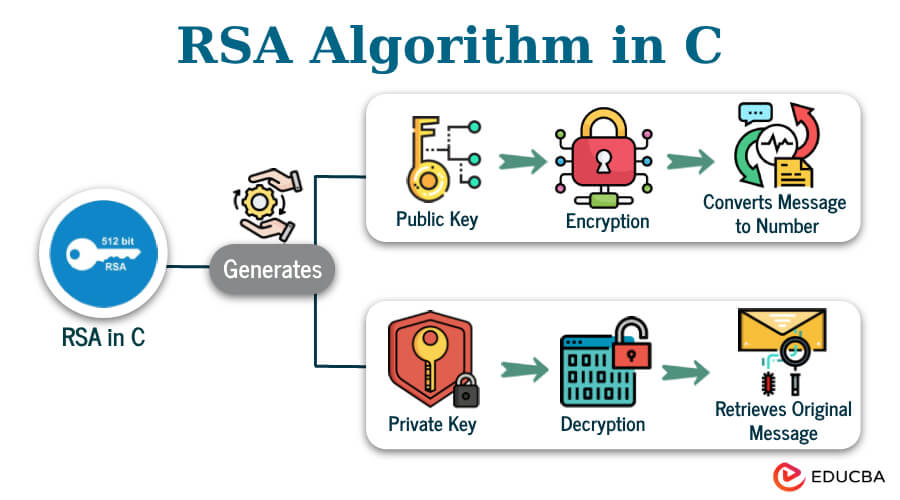Encryption, a formidable line of defense against unauthorized access, has gained ascendancy in the digital age. With the proclivity for cybercrime burgeoning, the need for sophisticated encryption methodologies is paramount. This article delves into the nuances of building modern encryption algorithms in C, unraveling the complexities involved while also addressing the pervading fascination with cryptography.
At its core, encryption transforms plaintext into an indecipherable format called ciphertext. It is a systematic approach that ensures data confidentiality and integrity. The algorithms that govern this process can be either symmetric or asymmetric, a differentiation rooted in their key management strategies. Symmetric algorithms use a single key for both encryption and decryption, while asymmetric methods rely on a pair of keys—public and private. This distinction is fundamental to understanding modern encryption frameworks.
To embark on constructing an encryption algorithm in C, one must first comprehend the underlying mathematical principles. For instance, many contemporary cryptographic systems pivot around number theory. A quintessential example is the RSA algorithm, renowned for its utilization of large prime numbers. The process begins with key generation, where two distinct primes are chosen. Their product forms the modulus, while the Euler’s totient function aids in deriving the public and private keys. Mastering these concepts not only enhances algorithm design but also fosters intrigue regarding the security mechanisms that underpin our digital communications.
Next, let us progress to the practical implementation of a symmetric encryption algorithm, specifically the Advanced Encryption Standard (AES). AES is a robust and widely adopted cipher due to its balance of security and performance. In C, implementing AES requires an understanding of data structures and bitwise operations. The algorithm operates on blocks of data, utilizing a series of transformations—including substitution, permutation, and mixing—across multiple rounds, contingent on the key length.
The critical components of AES include the S-box, which provides non-linearity, and the MixColumns operation, crucial for diffusion. Implementing these transformations in C necessitates meticulous attention to detail. For example, utilizing arrays to represent the state and employing loops to iterate through the rounds are essential programming techniques. Additionally, understanding memory management in C is invaluable, as data integrity hinges on how variables are handled and stored throughout the encryption process.
However, one must also consider the importance of key management. The strength of an encryption algorithm can be undermined by poor practices surrounding key storage and exchange. In modern systems, it is advisable to adopt protocols such as Diffie-Hellman for secure key exchange, thus maximizing security even further. Integrating these protocols into your C implementations ensures that the encryption solution remains robust against numerous attack vectors.
Another dimension to explore is the role of random number generation in cryptography. Secure encryption algorithms rely heavily on randomness to generate keys that are unpredictable. The use of weak random number generators can lead to vulnerabilities, allowing adversaries the opportunity to crack the encryption. In C, utilizing functions from libraries designed for cryptographic purposes ensures that randomness adheres to stringent standards. This aspect underscores the intricacies of building a resilient encryption system.
One of the more fascinating revelations in cryptographic study is the ongoing arms race between cryptographers and attackers. Each advancement in encryption is met with countermeasures aimed at breaching it. As new algorithms emerge, the requisite for thoughtful research and evaluation becomes apparent. For instance, the advent of quantum computing threatens to upend traditional encryption schemes. Quantum algorithms, like Shor’s algorithm, pose significant challenges to systems that currently rely on the factorization of large primes. In response, the cryptographic community is actively researching post-quantum algorithms, steering clear of vulnerabilities. This dynamic interplay evokes intrigue; the cat-and-mouse game adds a layer of excitement to the field.
In conclusion, building modern encryption algorithms in C is a multilayered undertaking steeped in mathematical rigor and practical programming skills. From understanding theoretical foundations, such as number theory and key management, to implementing algorithms like AES, a comprehensive approach is essential. Moreover, recognizing the threats posed by adversaries—both traditional and emergent—encourages continuous learning and adaptation in encryption practices.
The ever-evolving landscape of cryptography invites inquisitiveness and inspires ongoing investigation. As one traverses through the labyrinth of algorithms and protocols, the deeper appreciation for the art and science of encryption crystallizes. In this digital era, where data is currency, mastering the craft of encryption not only protects information but also embodies a commitment to safeguarding privacy in a fractious world.








Leave a Comment